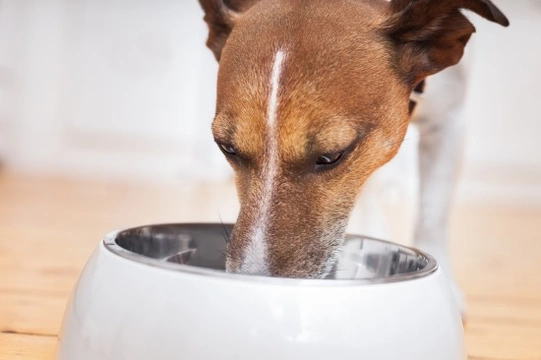
10 FAQs About Commercial Complete Dry Dog Food Preservatives
1. Why does commercial dry dog food need to preserved?
Preservation is necessary in some shape or form otherwise the fats and oils in the food would very quickly become rancid, and the product would have an extremely short-shelf-life. The production of a completely preservative-free, extruded dry dog food would not be a feasible option for the manufacturer, retailer or the end consumer.
2. How can preservatives be avoided?
Unfortunately in extruded dry food, this is not possible. However, effective natural alternatives to chemical preservation are now very much more widely available to the pet food industry. Naturally preserved products are becoming increasingly popular with the discerning pet owner, and the number of pet food brands offering this option is increasing in response to this growing demand. Some sterilised pet foods (e.g. high quality canned products) include no preservatives, and fresh food is the preferred option for those who want a truly natural menu for their dog.
3. Why are chemical pet food preservatives so unpopular?
An increasing awareness of the potential dangers that high levels of some chemical preservatives may pose are the primary reason why many dog owners actively seek naturally preserved food. Whilst preservatives are generally used at low levels, there are concerns that continued exposure to certain chemicals on a daily basis could have an accumulative negative effect on canine health. (Please see Q7-9).
4. Can chemical preservatives cause behavioural problems in dogs?
Some chemical preservatives have been proven to contribute to learning difficulties and hyperactivity in sensitive children. Although evidence in the canine species is largely anecdotal, it is believed that some sensitive dogs may suffer from a similar response. It is important to bear in mind though that true hyperactivity in dogs is very rare, and most canine behavioural issues are multi-factorial (i.e. there are usually several causes). Changing the diet may be beneficial (especially if the food promotes blood sugar fluctuations as well as it containing artificial additives) but it should never be considered a quick fix or a substitute for professional behavioural advice.
5. What are EU / EEC permitted preservatives or additives?
Food additives are substances added intentionally to foodstuffs to perform certain technological functions (e.g. to colour, sweeten or preserve). They are defined as: “any substance not normally consumed as a food in itself and not normally used as a characteristic ingredient of food whether or not it has nutritive value.” (Article 1(2) of Directive 89/107/EEC). Additives are categorised by their “E” number, but not all additives are “bad”. The reason why they are viewed with such suspicion is because when a pet food manufacturer describes preservatives under the broad umbrella that encompasses EU approved or EEC permitted, it is impossible for the dog owner to know exactly what has been used unless they take the time to contact the manufacturer to ask. There is of course the risk that some undesirable additives may be hiding under that cloak of anonymity.
6. I’ve heard that some naturally preserved pet foods use raw materials which are artificially preserved! Is this true?
Unfortunately yes it is in a few cases, and although these artificial preservatives should be declared, it is not always the case that they are. can again make it impossible for an owner to know whether the food is truly free from artificial preservatives. Fish meal is an ingredient which is often preserved artificially and finds its way into supposedly “natural” products on occasion. Some manufacturers have very clear information concerning the preservatives that they use on their website, but if you cannot find any clarification; the only way to find out is to ask.
7. What are BHA and BHT?
These are 2 synthetic antioxidants which may be found in some commercial dry dog foods. BHA is short for butylated hydroxyanilose (E320), and it has carcinogenic (cancer causing) and oestrogenic properties in high doses. It was banned in Japan way back in 1958, and is not permitted in infant foods in the UK. BHT is short for butylated hydroxytolulene (E321). It was often used in conjunction with BHA, and is associated with the same negative effects. BHT was also banned in Japan in 1958 and is not permitted in infant foods in the UK. Its use in human food within the EU is restricted due to its side effects.
8. What is ethoxyquin?
Ethoxyquin (E324) is another synthetic antioxidant. There has been much speculation that it may be responsible for health problems in pets (raised liver enzymes in particular), and in 1997, the Center for Veterinary Medicine in the US asked that pet food manufacturers voluntarily restrict levels to 75ppm. It is banned in human foods in Australia and the EU.
9. What is propyl gallate?
Propyl gallate (E310) is another controversial synthetic antioxidant. In people, high doses may cause gastric or skin irritation. Gallates are not permitted in infant or childrens food in the UK due to gallates because they may cause a blood disorder called methemoglobinemia.
10. What are the natural alternatives to the chemicals described in questions 7-9?
Tocopherols (vitamin E), ascorbic acid (vitamin C), citric acid and bioflavonoid plant extracts such as rosemary are popular natural alternatives. These natural antioxidants may not mean the product has quite such a long shelf-life as one which has been chemically preserved, but for pet owners who are aware of the potential dangers of some chemical preservative, this small downside is more than adequately compensated for by the assurance of feeding a product which does not include known carcinogens.



